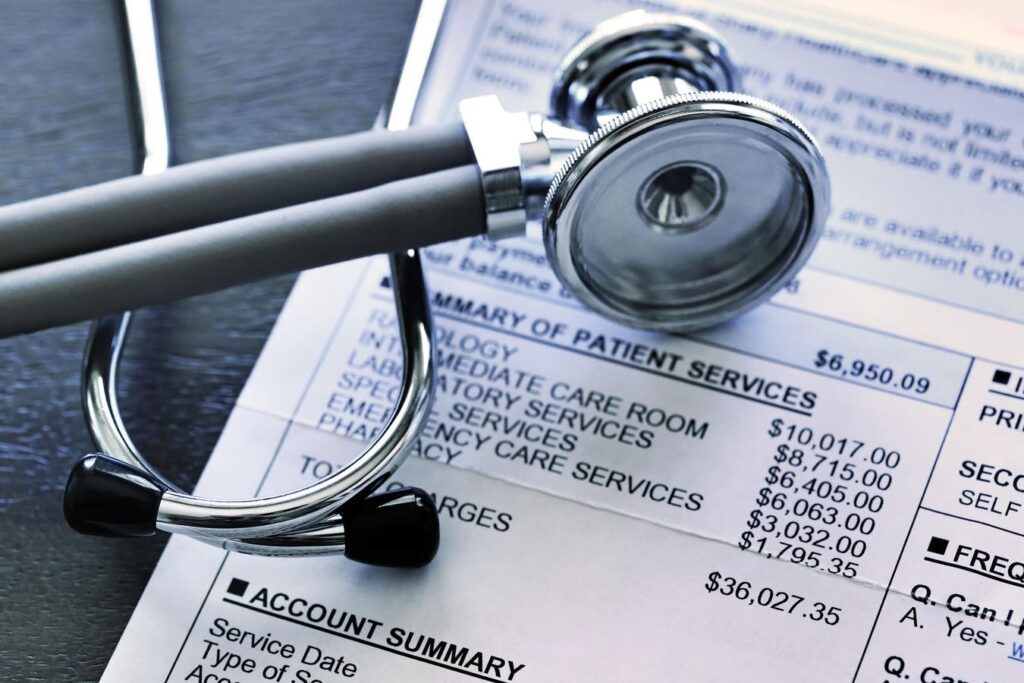The Affordable Care Act (ACA) Marketplace Open Enrollment period begins November 1, 2025, in most states and it’s shaping up to be a tricky one.
Premiums are going up, and the enhanced premium tax credits that have helped millions of Americans afford health care coverage are scheduled to expire at the end of the year. The debate over extending the credits has become a major sticking point in Washington—and one of the reasons for the current federal government shutdown.
The issue? In the One Big Beautiful Bill Act (OBBBA) they passed in July, Republicans made permanent many other tax breaks, and even created some new temporary ones, but didn’t extend the ACA tax credits. Senate Republicans aren’t keen to do so in any short-term funding measure, and Democrats have said they won’t support any funding bill that leaves the tax credits out.
Who Uses The Marketplace?
Most Americans rely on their employer for health care coverage—typically, you’ll pay a portion (or, in some cases, all) of your health care premiums through automatic pre-tax deductions from your paycheck. When you leave your employment, you typically lose your coverage, although you may be able to temporarily continue it under the Consolidated Omnibus Budget Reconciliation Act—referred to as COBRA—depending on the size of your employer. COBRA is a federal law that requires companies with more than 20 employees to allow you to continue coverage (entirely out of your own pocket) for up to 18 months.
If you’re unemployed or your employer doesn’t provide health care insurance, or if you’re self-employed or own a small business, finding individual coverage can be difficult. The solution, courtesy of the ACA (also known as Obamacare) was the creation of health insurance Marketplaces.
The Marketplaces allow individuals to buy health insurance coverage that isn’t tied to employment. Marketplaces offer different levels of coverage and the coverage is private pay, meaning individuals choose and pay for their own coverage.
There is a health insurance Marketplace in every state. According to the latest count by KFF, 21 states, including California and New York, operate their own Marketplaces. In other states, the federal government runs the Marketplace. You can find it at HealthCare.gov.
The Marketplace option makes it easier for some groups, like small business owners, to get coverage. The Center for American Progress reports that about 5.2 million small business owners and self-employed Americans are covered through the marketplaces.
Marketplaces Eligibility And Benefits
To qualify for coverage, you must live in the United States, be a U.S. citizen or national (or lawfully present), and not be incarcerated.
Under Marketplace plans, insurers cannot refuse coverage based on your gender or a pre-existing condition. There are no lifetime or annual limits on coverage for essential health benefits, and, young adults can stay on their family’s insurance plan until age 26. (Pre-ACA, you could be booted off once you hit age 19.)
The cost of coverage depends on where you live, your income, and the size of your household. As with employer-based plans, you pay for coverage through monthly premiums.
You typically sign up for coverage during Open Enrollment.
Understanding Open Enrollment
Open Enrollment is the window of opportunity to sign up for, renew, or change your Marketplace health plan for the coming year. It’s also when you can apply for assistance, including those premium tax credits, which lower monthly premiums and out-of-pocket costs.
For the 2026 coverage year, Open Enrollment begins November 1, 2025, and runs through mid-January in most states. Your new coverage generally begins on January 1 if you enroll by mid-December.
For the past few years, if you earned up to 150% of the Federal Poverty Level (FPL), you could sign up for coverage at any time of the year. That option ended in August of this year. Going forward, everyone will have to sign up or make changes during the Open Enrollment period.
If you miss the window, you usually can’t get Marketplace coverage until the following year unless you experience a qualifying life event like getting married or having a baby.
How Premium Tax Credits Work
Marketplace health care insurance premiums were still too high for a lot of people. The solution? Premium tax credits that lowered premium costs.
Initially, those premium tax credits were available only to people earning between 100% and 400% of the FPL. The FPL is an income level used to determine eligibility for certain programs and benefits—it’s updated annually and varies based on the size of your household. For 2025, the FPL for a one-person household is $15,650 and for a four-person household it is $32,150.
The amount of help you received depended on your income, age, and the cost of plans in your area. If your income is above 400% of the FPL, you may qualify for the premium tax credit that lowers your monthly premium for a Marketplace plan. If your income is between 100% and 400% of the FPL you qualify for the premium tax credit that lowers your monthly premium for a Marketplace plan in all states. If your income is below 138% of the FPL and your state has expanded Medicaid coverage, you’re likely to be steered onto Medicaid. If your income is below 100% of the FPL, you probably won’t qualify for savings on a Marketplace health plan, but you may qualify for Medicaid.
(For more on Medicaid, check out this previous article.)
In 2021, Congress expanded these tax credits, but only temporarily. The formula was revised so that lower-income households paid a smaller portion of their income toward their monthly premium. The changes also removed the income cap, allowing people earning more to still qualify for help if their premiums were high relative to their income. Notably, the formula capped what anyone would pay for a benchmark silver plan at about 8.5% of their income. (There are four kinds of plans: Bronze, Silver, Gold, and Platinum. Silver plans, which are the most popular, cover about 70% of health care costs.)
Here’s how that math works. Let’s say you earn $65,000 a year and live in an area where a silver plan costs $700 a month. Without the enhanced credits, you wouldn’t receive any subsidy because your income exceeds 400% of the FPL. With the enhanced credits, the government caps your premium at 8.5% of your income (in our example, around $460/month). The government pays the difference to your insurer.
The result is that these tax credits lower the cost of health care coverage, and and especially so for older adults who face higher premiums. That’s because premiums are age-based. Without subsidies, a person who is 52 will pay about twice as much as a person who is 21, and a person who is 64 will pay three times as much as a person who is 21. (Unless you’re disabled, you need to be 65 to qualify for Medicare. So those who retire early often rely on Marketplace plans.)
According to KFF, a not-for-profit healthcare think tank, over half of Marketplace individual enrollees with incomes over four times the poverty level are aged 50–64. If enhanced subsidies lapse, average premiums for a 64-year-old with income of 401% of the FPL will go from $5,328 in 2025 to $16,500 in 2026, KFF estimates.
Claiming The Credits
Remember that these credits are income-based and you apply for health care coverage in the fall before the year of coverage. To insure that taxpayers are getting the right amount of credit—not too much or too little—if you get the benefit of advance credit payments, or if you plan to claim the premium tax credit, you must file a federal income tax return and attach Form 8962, Premium Tax Credit (PTC). You claim the premium tax credit and reconcile the credit with the amount of your advance credit payments for the year on Form 8962 (you must file a return to reconcile the credit with the amount of your advance credit payments even if you’re usually not required to file).
Why the Pushback in Congress?
The debate over extending the enhanced premium tax credits comes down to cost. Continuing the program would add roughly $350 billion to federal spending over ten years. Republicans argue that’s too high a price and that the policy subsidizes higher-income Americans who can afford coverage on their own.
Democrats counter that letting the credits expire would sharply raise premiums and push millions off coverage—premium payments could more than double in some states. The Congressional Budget Office estimates that roughly four million people would lose their health insurance if the enhanced credits are allowed to lapse. And while some critics have claimed the subsidies benefit wealthy households, the Joint Committee on Taxation found that 86% of enhanced tax credit spending goes to people earning under $150,000 a year, with no meaningful benefit to those earning over $500,000.
What Else is Changing in 2026?
If Congress doesn’t act, 2026 could look very different. In addition to the changes noted above, there will no longer be caps on repayment amounts—that is, the amount you have to repay if it turns out, when you file your taxes, you got too big a subsidy. That’s especially concerning for people with fluctuating incomes, such as gig workers and the self-employed, who could end up owing thousands of dollars at tax time. Currently, over 4.4 million self-employed persons and small business owners and employees receive tax credits that reduce their premium costs.
Premiums will also go up. As the result of changes in the law, most Marketplace consumers can expect to pay 4.5% higher premiums in 2026—before the effect of the reduced premiums. Those in the Marketplace and those on employer-based plans could see an out-of-pocket cap that is 15.2% higher in 2026 than it was in 2025.
As premiums go up, and subsidies go down, many taxpayers will look for cost-cutting measures, including cheaper plans. The trade-off for lower monthly payments tends to be much higher deductibles, keeping some health care options out of reach.
Eligibility rules are also tightening. Starting in 2026, lawfully present immigrants who have lived in the U.S. for fewer than five years and earn below the poverty level will no longer qualify for subsidized coverage. Beginning in 2027, eligibility for premium tax credits will again be limited to lawful permanent residents (green card holders)—refugees who are here lawfully and those who have been granted asylum will lose eligibility. And, those who rely on Deferred Action for Childhood Arrivals (DACA), a U.S. immigration policy that offers protection from deportation to eligible undocumented immigrants who were brought to the country as children, are also affected. An earlier policy that allowed them to enroll in Marketplace coverage expired in August. Now, DACA recipients aren’t eligible for Marketplace coverage or premium tax credits.
What’s Next?
By now, most state-based Marketplaces have already notified those enrolled in their plans about rising premiums and smaller tax credits for 2026. However, the federally run Marketplace, HealthCare.gov will not be sending out notices with updated premium information, and the Centers for Medicare & Medicaid Services (CMS) has told insurers that providing this information is optional. That means that many taxpayers who rely on the federal Marketplace may not realize their premiums are going up—to check your costs, log into your online HealthCare.gov account. If you don’t, you could be in for an expensive surprise when your bill arrives in January.
Read the full article here














